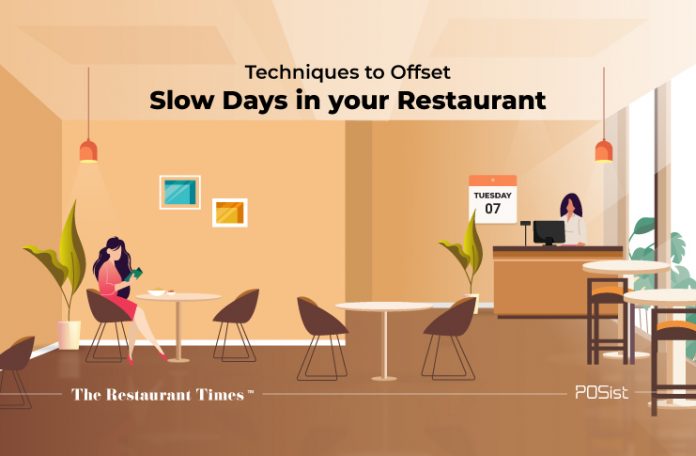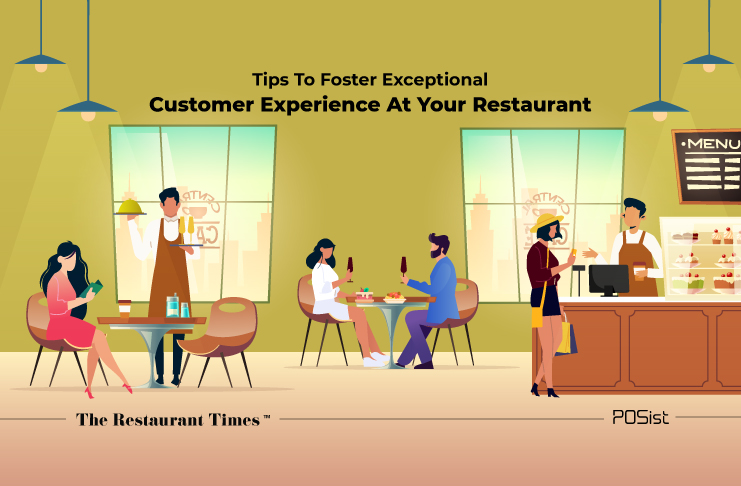A restaurant space filled with customers is the ardent wish of every restaurateur in the F&B industry. All tables occupied, customers flowing in, orders rushing in, dishes coming out of the kitchen and ready to deliver on the customer’s table. On a typical busy day in any restaurant, there’s a lot of work but with happy customers’ faces and a spike in sales, it is all worth the hustle. As soon as the slow days, mostly weekdays, approach, restaurant sales go down. For the most of the day, there are hardly any customers to attend to. Shutting down the restaurant doors on slow days is atypical in the restaurant business.
But, with the right techniques and early preparation, you can create well-crafted marketing campaigns that would increase the sales during the slowest period of your restaurant.
Techniques To Offset Slow Days In Your Restaurant
No restaurateur can expect the same number of sales and customer footfalls every day. With the varying sales, the inventory requirements, purchase orders, stock consumption and food costs, would also witness a fluctuating demand and supply curve. The most successful restaurants understand the math behind a few good weekends with more customers or during late evenings can do for their bottom line, at the end of the month. They also observe stability in terms of their inventory and overall food costs during these peak times.
When it comes to understanding the dynamics of slow versus busy days, restaurant management software can be of great help. Based on the entire week’s sales data, POS systems predict the future demands and provide actual estimation of inventory that will be consumed in the upcoming week or month. This not only improves the shelf life management but also curbs overall food costs. The item or outlet wise performance is also better understood which helps the restaurateurs to create offers specific to an item or outlet.
Before strategizing marketing campaigns, pre-planning or analyzing the data is necessary to keep a check on the operational costs. Here’s a list of 7 effective ways that will help you draw more customers and increase sales in your restaurant even on the slow days.
1. Formulate Targeted Campaigns
The slow days in your restaurant can be utilized for scheduling your weekly promotional offers. You can plan promotional campaigns and prepare incentive programmes for your restaurant. The ‘Don’t cook Wednesday’ campaign by Pizza Hut is an example of how restaurants can create strategies to drive more sales during mid-week
To encourage customers to dine-in mid-week, your marketing efforts should be targeted. Restaurant Management Software collects the entire customer data of your restaurant and help you to run targeted marketing campaigns. You can send direct push notifications to your customers about the discounts and special menu offers. Based on your customer database, you can send them customized birthday and anniversary discounts to increase customer loyalty.
2. Exclusive Offers For Weekdays Only
Creating exclusive offers on weekdays is a great way to incentivise visits during the off-peak days. The famous restaurant chain, Barbeque Nation has priced its weekday buffet menu lower than that on weekends. Based on the past sales records, POS systems provide you with reports on each item sold. You can update the pricing of menu items and upsell those items whose sales margin have been bleak. Alcohol items have higher profit margins than food items but value pricing for the weekdays would increase the number of dine-in customers during weekdays.
Many cafes that serve in-house liquor create happy hour offers where alcoholic drinks are priced lower and clubbed with meal or drink combos for certain hours of the day. Free drinks for ladies on weekdays is also a buzzing trend that attracts customers.
3. Focus On Delivery Orders
When your in-premise sales are down, you can shift your focus to improve food delivery. Large Restaurant chains like Dominos and KFC offer delivery discounts to their customers or specialized discounts on their online menu items. Offering special delivery discounts on third-party aggregator platforms for corporates would increase the number of orders on slow days. Integrated ordering systems monitor the ordering behaviour of customers on dine-in, online and third-party platforms.
This provides a better understanding of the items that are most popular among the customers. You can create customized delivery offers on website/mobile app and online food delivery aggregators and send direct SMS to your customers with customized coupons code. It is also easy to upsell the least selling items or highly-priced menu items by providing special delivery discounts.
4. Experiential Dine-in
Restaurants are creating experiential dine-in experiences for customers by organizing tasting menu and wine events. These are interesting promotional tactics that bring businesses to the restaurant during slow seasons.
The tasting menus include small samples of the best signature dishes designed by chefs, whereas wine tasting events elevate the dine-in experience of wine lovers.
These concepts work well with a small or large group of diners who are willing to experiment with their meals. By bringing good food and good wine together on slow days, you can drive more customers into your restaurant and create an experiential dine-in experience for your customers.
5. Better Facilities To Acquire Customers
It is important to adapt according to the ever-evolving dynamics of the restaurant industry. Studies suggest that remodelling your restaurant can increase annual sales by 10-30%. The slow season can be a great time for your restaurant to renovate. Renovating a restaurant during the slow season such as during summer days is beneficial as it doesn’t impact the restaurant business too much. Since the customer turnover is low, your restaurant would be at the least risk of losing customers.
Automation is changing the face of the restaurant industry. While implementing automated technological tools might seem a costly affair but it accelerates the entire business operations of your restaurant and attracts more customers. With automated tools like Kitchen Display Systems(KDS) and handheld devices, you can re-establish your kitchen infrastructure and prepare your restaurant staff to serve customers with more efficiency. Slow days are also a great time for updating your menu and rolling out item related offers to acquire more customers.
6. Customer Engagement With Live events
One of the most conventional yet effective tactics for engaging customers on slow days or late evenings on weekdays is by organizing live events. Based on your restaurant type and customer demographics, you can create a lively dine-in experience for your customers. If more families prefer your restaurant for dine-in, you can host karaoke or ghazal night. If your restaurant visitors are primarily youth, you can organize live music gigs or DJ nights. Restaurants with dark, rustic, sportive themes that attract more football or cricket fans can even host live match screenings. With comedy clubs gaining popularity, restaurants are also hosting comedy nights. Ladies Night is another popular restaurant event ideas to attract more female customers during slow nights.
7. Platform To Bring Communities Together
Restaurants are becoming go-to places for building a community and creating better connections. Sponsoring community events would provide an opportunity for restaurants to increase their visibility and goodwill among the public and local businesses. You can reach out to food influencers, host educational events, partner with NGOs or organize corporate events. Reaching out to businesses and local communities is not only profitable for the restaurant but a great way of adding value to your customers.
Ensure that your brand presence is widely visible and easily discoverable by your customers. Keep your social media channels updated with all the latest happenings at your restaurant. Some days will be a harder sell for your restaurant. While slow days can be arduous and challenging for your restaurant, these helpful tips and ideas will ensure that your restaurant never runs out of customers.

















